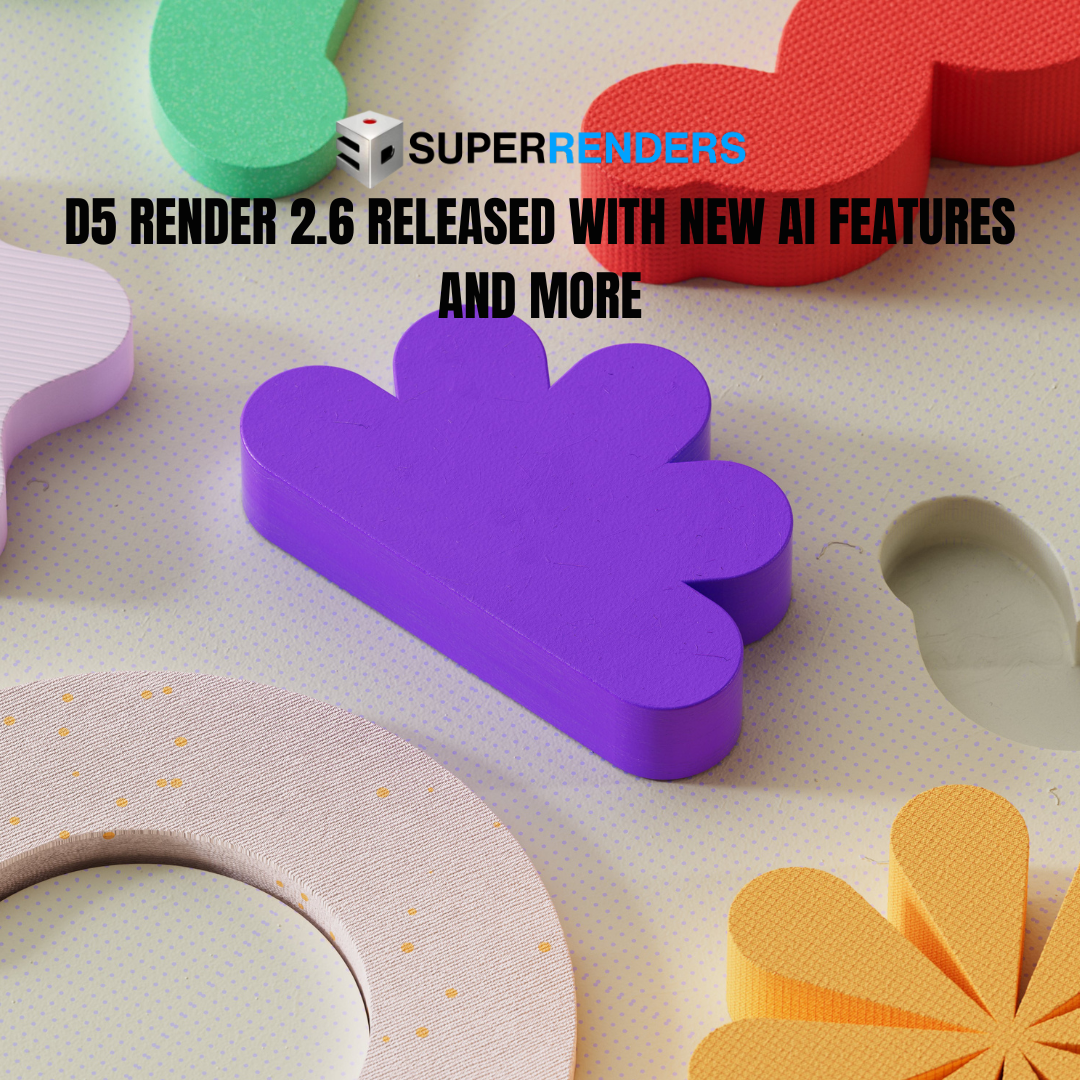The recent release of the D5 Render 2.6 update brings a host of new features and optimizations, marking a significant upgrade for users. This update focuses on advancements in AI-driven functionalities, rendering improvements, expanded asset library content, and workflow optimization.
The AI capabilities in D5 Render 2.6 have been enhanced significantly. A standout feature, AI Atmosphere Match, allows users to generate the overall atmosphere of a scene by simply uploading a reference image. This tool integrates convolutional neural networks and adaptive color space algorithms for accurate style transfer. The update also introduces AI-generated Material Texture Maps for material editing, automatically creating normal, roughness, and height channel maps. Furthermore, the AI Material Match feature now automatically applies suitable material templates to imported models, streamlining the workflow.
Rendering improvements are also a key focus. These include optimization of multimedia material transparency, local exposure adjustments for a wider dynamic range, and the addition of a flowing water material with customizable parameters. The UV Randomizer feature has been introduced to reduce texture repetition, and multiple reflections on transparent materials are now supported in preview mode. Additional enhancements include an attenuation intensity parameter for strip and rect lights, and the ability to customize the sun’s position in Geo&Sky.
The asset library in D5 Render 2.6 has received a major expansion, adding procedurally-generated vines, a new HDRI library, futuristic particles, character models, plane fog models, low-poly trees, and xerophyte plants. This expansion substantially increases the versatility and realism achievable in projects.
Workflow enhancements are apparent in the optimized video editor, scene list, and camera integration. The update also introduces D5 LiveSync for 3ds Max beta, Camera Animation Sync for both 3ds Max and Cinema 4D, and Grouped Import for SketchUp, facilitating smoother integration with these commonly used software tools.
